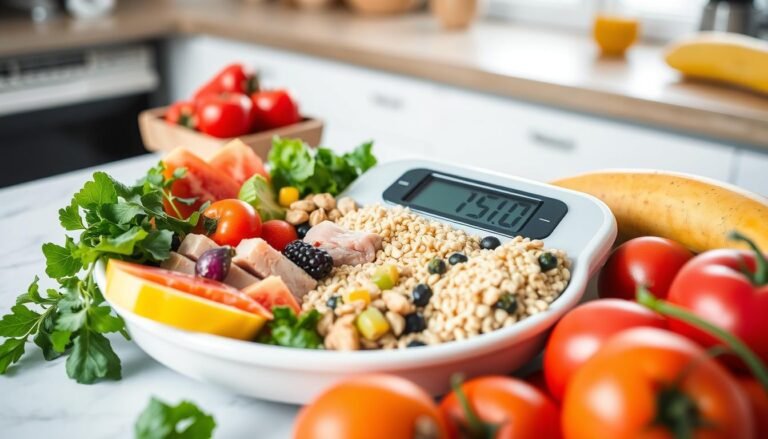In a world overwhelmed by dietary trends and conflicting nutritional advice, The P:E Diet emerges as a transformative and innovative framework for achieving optimal health and fitness. This revolutionary approach, developed by Ted Naiman, M.D., and William Shewfelt, is rooted in the principle of balancing protein to energy in every meal. By prioritizing nutrient-dense whole foods and reducing empty calories, The P:E Diet not only provides a practical solution for fat loss but also addresses the root causes of metabolic dysfunction and obesity.

With its focus on simplicity and science-backed methods, this practical diet and exercise book empowers individuals to achieve long-term vitality, lean body composition, and improved overall health. It’s a life-changing knowledge bomb that absolutely anyone can understand and implement.
Understanding the PE Diet
At its core, The P:E Diet emphasizes the critical relationship between protein to energy in our food choices. This revolutionary approach identifies protein as the key nutrient for building and repairing tissues, maintaining muscle mass, and supporting metabolic health. Meanwhile, energy comes from carbs and fat, which must be carefully balanced to prevent energy toxicity—a condition where excess calories lead to fat storage and metabolic dysfunction.
The principle is simple yet transformative: prioritize foods with a high protein percentage relative to their energy content. By doing so, you provide your body with the essential nutrients it requires without consuming an excess of unnecessary calories. This targeted approach not only supports optimal nutrition but also minimizes the risk of chronic diseases and helps regulate appetite effectively.
By understanding and implementing the protein-to-energy ratio, individuals can unlock the true potential of their diet, fostering a sustainable and intuitive way to eat for health and longevity. This concept explains exactly why food choice is everything and underscores the importance of focusing on nutrient density to achieve your goals without the need for unnecessary tracking or micromanaging quantities.
Why Protein Matters
Protein is the cornerstone of The P:E Diet, and for good reason. Unlike carbs and fat, protein plays a multifaceted role in optimizing health. It not only helps in maintaining and building muscle mass but also supports essential metabolic processes and promotes long-lasting satiety. When your diet is rich in high protein foods, you’re less likely to overeat because protein triggers satiety hormones that signal fullness to the brain more effectively than energy-dense foods like refined carbohydrates or unhealthy fats. Additionally, increasing protein intake can enhance fat metabolism, aid in muscle repair after exercise, and stabilize blood sugar levels, making it a vital component for overall well-being and sustainable fat loss. By prioritizing protein in your meals, you’re empowering your body with the tools it needs to thrive, while also addressing the root causes of overeating and energy imbalances.
Energy Sources: The Role of Carbs and Fat
While protein takes center stage, carbs and fat play crucial roles as sources of non-protein energy in the diet. These macronutrients provide the energy needed for daily activities and physiological processes, but their consumption must be carefully managed to avoid excess. The P:E Diet emphasizes moderation and balance, steering individuals away from foods that are high in both carbohydrates and fats—a combination rarely found in nature. Such foods, often highly processed, are not only calorie-dense but also designed to be hyper-palatable, making them easy to overeat and a significant contributor to weight gain and energy toxicity. By understanding the unique effects of carbs and fat on metabolism and focusing on nutrient-dense alternatives, you can make informed choices that support your health and align with the principles of The P:E Diet.
The Science Behind the PE Diet
The concept of The P:E Diet is rooted in evolutionary biology and nutritional science. Humans evolved as hunter-gatherers, consuming diets rich in protein from animal sources and lower in energy-dense foods. Modern agriculture and food processing have shifted this balance, leading to diets that are high in refined carbs and fat. This shift has contributed to the obesity epidemic and the solution lies in rebalancing our food intake.
Energy Toxicity and Chronic Disease
Energy toxicity occurs when we consume more calories than our bodies can effectively use, leading to fat storage, insulin resistance, and metabolic dysfunction. This imbalance, often driven by diets high in refined carbs and fat, disrupts the body’s ability to process and utilize energy efficiently. The P:E Diet directly addresses this issue by promoting foods that are nutrient-dense, high in protein, and low in empty calories. By prioritizing protein percentage in your diet, you create a natural mechanism for reducing excessive energy intake. This approach helps stabilize blood sugar levels, supports lean muscle mass, and facilitates sustainable fat loss. Additionally, reducing energy from carbs and fat while focusing on whole, minimally processed foods allows your body to re-establish metabolic flexibility, combating the root causes of chronic disease and paving the way for improved overall health.
Protein Prioritization and Satiety
Studies have shown that humans naturally prioritize protein in their diets, a phenomenon known as protein leveraging. When protein intake is insufficient, the body instinctively drives hunger signals, leading people to consume more energy-dense foods in an attempt to meet their protein needs. Unfortunately, these additional calories often come from refined carbs and fat, exacerbating weight gain and metabolic issues.
By increasing the protein to energy ratio, The P:E Diet effectively addresses this challenge. High-protein foods promote satiety by stimulating hormones like GLP-1 and PYY, which signal fullness to the brain, while also reducing levels of the hunger hormone ghrelin. This powerful combination not only curbs appetite but also helps regulate energy intake without the need for strict calorie counting. As a result, The P:E Diet offers a sustainable strategy for long-term fat loss, improved metabolic health, and enhanced overall well-being.
Key Principles of The PE Diet
To implement The P:E Diet, you’ll need to follow three foundational principles:
- Increase Protein Percentage: Choose foods with a high protein-to-energy ratio, such as lean meats, seafood, eggs, and low-fat dairy products. Opt for minimally processed options like skinless chicken breast, cod, or low-fat Greek yogurt to maximize protein intake without excess calories. Incorporating plant-based protein sources like lentils, chickpeas, and tofu can also add variety and nutrition.
- Decrease Carbohydrate Frequency: Limit intake of refined carbohydrates and sugary foods to encourage fat adaptation and maintain stable energy levels. Focus instead on whole grains like quinoa, brown rice, and oats, which provide fiber and nutrients without causing blood sugar spikes. Pair these with protein-rich meals to keep hunger at bay.
- Avoid High-Carb, High-Fat Foods: Steer clear of processed and energy-dense foods like pastries, ice cream, and fried snacks. These items are typically low in protein and high in empty calories, making them detrimental to your progress. Instead, prioritize nutrient-dense alternatives such as fresh fruits, nuts in moderation, and dark leafy greens for balanced energy and improved health.
Benefits of The PE Diet
Adopting The PE Diet can transform your health in multiple ways:
1. Weight Management and Fat Loss
By prioritizing protein and reducing energy-dense foods, The PE Diet helps regulate appetite and promotes fat loss. High-protein diets have been shown to increase metabolism and support lean muscle mass, making weight management more effective and sustainable.
2. Improved Metabolic Health
The PE Diet enhances insulin sensitivity and reduces the risk of metabolic syndrome. Lower carbohydrate intake stabilizes blood sugar levels, while higher protein intake supports muscle function and energy balance.
3. Reduced Risk of Chronic Diseases
Chronic conditions like diabetes, heart disease, and obesity are often linked to poor dietary choices. By addressing energy toxicity and emphasizing nutrient-dense foods, The PE Diet can significantly lower your risk of these diseases.
4. Enhanced Physical Performance
Protein is essential for muscle repair and growth, making The PE Diet ideal for athletes and fitness enthusiasts. Combined with regular exercise, this diet supports strength, endurance, and overall physical performance.
Practical Tips for Following The PE Diet
Implementing The PE Diet is simpler than you might think. Here’s how to get started:
1. Focus on Whole Foods
Choose natural, unprocessed foods with high protein content. Examples include:
- Lean meats (chicken, turkey, and beef)
- Seafood (salmon, tuna, and shrimp)
- Eggs and egg whites
- Low-fat dairy (Greek yogurt, cottage cheese, and skim milk)
- Non-starchy vegetables (spinach, broccoli, and zucchini)
2. Limit Refined Carbohydrates
Reduce or eliminate foods like bread, pasta, and sugary snacks. Instead, opt for moderate amounts of whole grains and fiber-rich carbohydrates.
3. Be Mindful of Fats
Incorporate healthy fats in moderation, such as those found in avocados, nuts, and olive oil. Avoid combining high-fat foods with high-carb options.
4. Track Your Progress
Monitor your protein-to-energy ratio and adjust your diet as needed. Apps and online calculators can help you stay on track.
The Role of Exercise in The PE Diet
Exercise complements The P:E Diet by enhancing fat loss, improving overall fitness, and promoting muscle growth. Ted Naiman, a board-certified family physician and co-author of this revolutionary dietary framework, emphasizes that maximizing tension in your muscles for extended periods is key to building strength and optimizing body composition.
Resistance training, such as weightlifting and bodyweight exercises, plays a vital role in achieving these goals. It helps increase lean muscle mass, which in turn boosts metabolic rate and accelerates fat loss. High-intensity interval training (HIIT) is another powerful tool, combining short bursts of intense activity with rest periods to maximize calorie burn and improve cardiovascular health.
Importantly, the P:E Diet also encourages functional and practical exercises that require no equipment, such as squats, push-ups, and planks, making it accessible to everyone. By pairing a high-protein diet with consistent exercise, you can achieve a leaner, stronger body while enhancing your overall health. This integrated approach underscores how the simplest and most practical diet and exercise principles can yield transformative results.
Common Challenges and How to Overcome Them
1. Adapting to Lower Carbohydrate Intake
Initially, reducing carbs may feel challenging, especially if your diet has been heavily reliant on refined carbohydrates and sugary foods. To ease this transition, focus on increasing your intake of high-protein foods, which promote satiety and help stabilize blood sugar levels. Incorporating plenty of non-starchy vegetables, like spinach and broccoli, can also provide essential nutrients while keeping overall carbohydrate levels low. Staying well-hydrated is critical, as it supports metabolism and helps alleviate common symptoms of carb reduction, such as fatigue or headaches.
2. Managing Cravings
Cravings for sugary or energy-dense foods can arise, particularly in the early stages of dietary change. Combat these by preparing satisfying, protein-rich meals that keep you full and energized throughout the day. Examples include grilled chicken with a side of steamed vegetables, or a Greek yogurt parfait topped with a handful of nuts. Keeping healthy, high-protein snacks on hand, like hard-boiled eggs or low-fat cheese, can prevent impulse eating. Over time, as your body adjusts to a higher-protein, lower-energy diet, these cravings will naturally diminish.
3. Staying Consistent
Consistency is the cornerstone of success with The P:E Diet. Planning your meals ahead of time not only ensures you meet your protein and energy goals but also reduces the temptation to deviate from the diet. Use tools like meal prep containers or apps to organize your weekly food intake. Additionally, maintaining a regular exercise schedule—even simple bodyweight workouts or walking—can reinforce your commitment to the diet and improve results. Building sustainable habits around both diet and activity is key to achieving long-term health benefits.
Success Stories with The PE Diet
Numerous individuals have transformed their lives with The P:E Diet, achieving remarkable success in various aspects of their health and fitness journeys. From significant fat loss and improved muscle tone to enhanced metabolic markers and increased energy levels, the benefits are far-reaching. Real-life examples include those who overcame chronic health conditions like obesity and type 2 diabetes by adhering to the protein-to-energy ratio principles. Others have reported achieving their fitness goals, such as building lean muscle and improving endurance, without resorting to complicated tracking or calorie counting. These success stories underscore the power of The P:E Diet as a sustainable, practical solution for people from all walks of life. By focusing on whole, nutrient-dense foods and implementing consistent exercise routines, countless individuals have taken control of their health and become the best possible versions of themselves.
Conclusion
The P:E Diet is more than just a diet—it’s a transformative and sustainable lifestyle that redefines health, longevity, and overall well-being. This innovative approach, as outlined by Ted Naiman in his practical diet and exercise book, transcends all other diet camps and explains exactly why food choice is everything. By mastering the protein-to-energy ratio, individuals can unlock their body’s true potential and achieve lasting results with minimal effort and maximum efficiency.
Whether your goal is fat loss, building lean muscle, or enhancing metabolic health, The P:E Diet empowers you to understand the principles that govern your physiology. It simplifies complex nutritional strategies into actionable steps, ensuring that you can achieve intuitive eating without unnecessary tracking or micromanaging quantities. This life-changing knowledge bomb is accessible to absolutely anyone and everyone ready to take the first step toward becoming the best possible version of themselves. With The P:E Diet, the path to a healthier, happier you is clear, practical, and within reach.
FAQs
What is the PE Protein Diet?
The PE Diet, or Protein-to-Energy Ratio Diet, is a nutritional framework focusing on increasing the protein percentage in your diet while minimizing energy intake from carbohydrates and fats. It emphasizes nutrient-dense, high-protein foods to achieve satiety, support fat loss, and optimize health. This approach prioritizes protein for its essential role in muscle maintenance and metabolism while limiting non-protein energy sources to prevent overconsumption of calories
What is the Difference Between Keto and the PE Diet?
Both the keto diet and the PE diet aim to promote fat loss and metabolic health, but they differ in their macronutrient focus:
- Keto Diet: Focuses on high-fat, moderate-protein, and very low-carbohydrate intake. It emphasizes fat as the primary energy source and induces ketosis.
- PE Diet: Focuses on a high protein-to-energy ratio, prioritizing protein while limiting both carbs and fats. Unlike keto, the PE diet doesn’t specifically aim for ketosis but emphasizes protein as the central nutrient.
What to Eat on the PE Diet?
The PE Diet promotes foods with a high protein-to-energy ratio, including:
- Lean Proteins: Chicken breast, turkey, fish, lean cuts of beef, egg whites.
- Non-Starchy Vegetables: Spinach, broccoli, zucchini, and other leafy greens.
- Low-Fat Dairy: Cottage cheese, Greek yogurt. The goal is to avoid foods high in both fats and carbohydrates, such as processed snacks and desserts, to prevent overconsumption of energy.
What Does Ted Naiman Eat in a Day on the PE Diet?
Dr. Ted Naiman’s typical day on the PE Diet includes:
- Breakfast: High-protein options like scrambled egg whites or a protein shake.
- Lunch: A large salad with lean protein such as grilled chicken or fish.
- Dinner: Lean meat with non-starchy vegetables and a low-carb side. Dr. Naiman’s meals are crafted to maximize protein intake and minimize non-protein energy while staying satisfying.
How Does the Protein-to-Energy Ratio Explain Every Single Diet?
The protein-to-energy (P:E) ratio explains the effectiveness of diets by evaluating the balance of protein to non-protein energy (carbs and fats). Diets with a higher P:E ratio prioritize protein for muscle maintenance and satiety while limiting excess energy from carbs and fats, which are often stored as body fat when consumed in excess. This concept is central to understanding why certain diets, like low-carb or low-fat, succeed when they increase the protein proportion relative to energy
Why Does the PE Diet Help You Lose Fat?
The PE diet helps you lose fat by emphasizing high-protein foods that enhance satiety, reduce hunger, and prevent overeating. By limiting non-protein energy (carbs and fats), it ensures you consume fewer calories while meeting your nutritional needs. This strategy helps your body tap into stored fat for energy, promoting fat loss without compromising muscle mass
Is the PE Diet a Low-Fat or Low-Carb Diet?
The PE diet can be adapted as either low-fat or low-carb, depending on your preference, but its primary focus is on maximizing protein intake. By avoiding foods high in both carbs and fats, the diet encourages a balance that reduces energy density while prioritizing protein. This flexibility makes it different from traditional low-fat or keto diets
Can the PE Diet Help With Insulin Resistance?
Yes, the PE diet helps improve insulin sensitivity by encouraging fat loss and reducing non-protein energy intake. High-protein foods stabilize blood sugar levels, reduce insulin spikes, and promote fat adaptation. This reduces the likelihood of metabolic disorders like insulin resistance and type 2 diabetes
What Foods Should You Avoid on the PE Diet?
To maximize the P:E ratio and achieve optimal results, avoid these foods:
- High-Fat, High-Carb Foods: Pizza, ice cream, doughnuts.
- Refined Carbs and Fats: Sugar, flour, and oils.
- Low-Protein Processed Foods: Snacks that are calorie-dense but lack protein.
These foods dilute the protein in your diet and promote overeating, which hinders fat loss
How Does the PE Diet Explain Exactly Why Food Choices Matter?
The PE diet explains that food choices impact health and body composition based on their protein and energy content. Foods with a high protein-to-energy ratio promote satiety, reduce calorie intake, and prevent energy toxicity (excessive carbs and fats). This principle underpins the success of nearly all effective diets by focusing on nutrient density over energy density
Why Are Foods High in Both Carbs and Fats Problematic?
Foods high in both carbs and fats, such as desserts and processed snacks, are energy-dense and highly rewarding, which makes them addictive and promotes overeating. These foods dilute the protein in your diet, leading to nutrient hunger and excess calorie consumption. Avoiding them is a cornerstone of the PE diet



